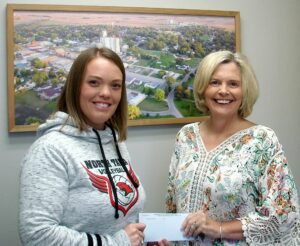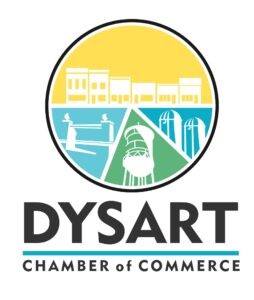Going with the flow
Community partnership hopes to establish educational wetland behind Union Middle School
- Led by Union Community School District Board of Education president Ben Schemmel, a group of agriculture, business, school, and government leaders gathered on Thursday, July 24, near the Union Middle School football/softball fields to discuss plans to design, fund, and construct a new educational wetland in the area. Those in attendance included (from left) Dan Hatch, Evan Brehm, Union Superintendent John Howard, Brian Boelk, Dave Schneider (back), Mayor Pro Tem Mary Wankowicz, Schemmel, Pastor Daniel Hartwig (back), Stacie Buhr, John Rathbun, Amy Bouska, Ethan Meyer, and John Stoakes. PHOTO BY RUBY F. MCALLISTER
- PHOTO BY RUBY F. MCALLISTER
- PHOTO BY RUBY F. MCALLISTER
- PHOTO BY RUBY F. MCALLISTER
- PHOTO BY RUBY F. MCALLISTER
- The entrance to Union Middle School’s football/softball complex pools with standing water back on July 24 in Dysart. PHOTO BY RUBY F. MCALLISTER
- PHOTO BY RUBY F. MCALLISTER
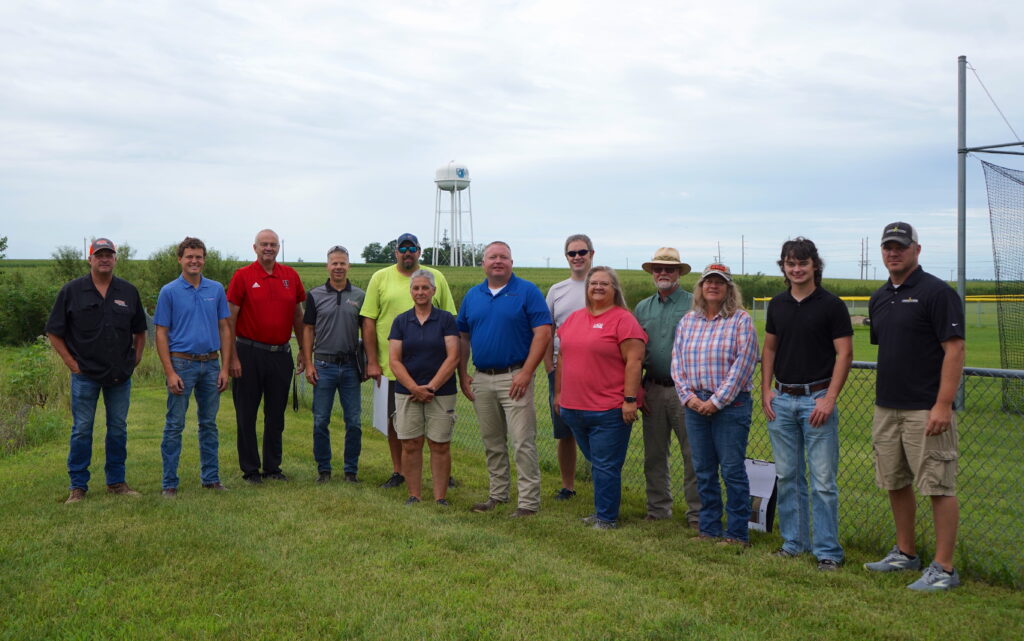
Led by Union Community School District Board of Education president Ben Schemmel, a group of agriculture, business, school, and government leaders gathered on Thursday, July 24, near the Union Middle School football/softball fields to discuss plans to design, fund, and construct a new educational wetland in the area. Those in attendance included (from left) Dan Hatch, Evan Brehm, Union Superintendent John Howard, Brian Boelk, Dave Schneider (back), Mayor Pro Tem Mary Wankowicz, Schemmel, Pastor Daniel Hartwig (back), Stacie Buhr, John Rathbun, Amy Bouska, Ethan Meyer, and John Stoakes. PHOTO BY RUBY F. MCALLISTER
DYSART – On a recent Thursday morning in July, in the soggy back parking lot of Union Middle School, Tama-Benton Cooperative general manager and school board president Ben Schemmel convened a group of agriculture, business, school, and government leaders, but not to talk corn, beans, or even the volatile state of the cattle market. Rather, they gathered to address Dysart’s increasingly-problematic water woes and one possible solution — building an educational wetland.
“This is amazing representation. It’s outstanding. Thank you all for being here this morning,” Amy Bouska, urban conservationist with the Iowa Department of Agriculture and Land Stewardship (IDALS), said as she addressed the dozen-member group gathered near the middle school’s football/softball fields which lie adjacent to the district’s roughly 20-acre FFA crop plot. “I work with big cities but I also work in small towns. We’re doing a lot of work to try to address the runoff that is coming off urban areas. And we especially like these projects that are on the edge of town that have an influence from ag runoff as well as urban. … My goal today is just to simply get a better sense of what the site looks like [and] get a sense of what you’re hoping to achieve out here so that we can move forward.”
In addition to Bouska and Schemmel, those present for the kickoff session on July 24 included Union Superintendent John Howard, Dysart Mayor Pro Tem Mary Wankowicz, Brian Boelk with Axiom Consultants, Iowa Soybean Association conservation agronomist Evan Brehm, NRCS district conservationist Stacie Buhr, Dan Hatch with Hatch Grading & Contracting, Pastor Daniel Hartwig with the the Dysart Tree Board, IDALS environmental specialist Ethan Meyer, Iowa Dept. of Agriculture environmental specialist John Rathbun, Dysart Public Works superintendent Dave Schneider, and Iowa Corn Growers Association district field manager John Stoakes.
The runoff Bouska mentioned was front and center that morning with water pooling nearby. It had rained heavily the night before – much as it has all summer in Iowa – making it easy to envision the green space surrounding the athletic fields one day becoming a wetland.
“So the overall vision, we would be able to control the water coming off [with] an educational wetland, or deep pool wetlands. Maybe put in a few different types of edge of field practices as [the water] goes under the road or bring it from the farm fields,” Schemmel explained following Bouska’s opening remarks. “I really feel like this wetland [could] enhance [the area] by potentially being able to irrigate the football field and softball field and just bring agriculture to the front of the school.”
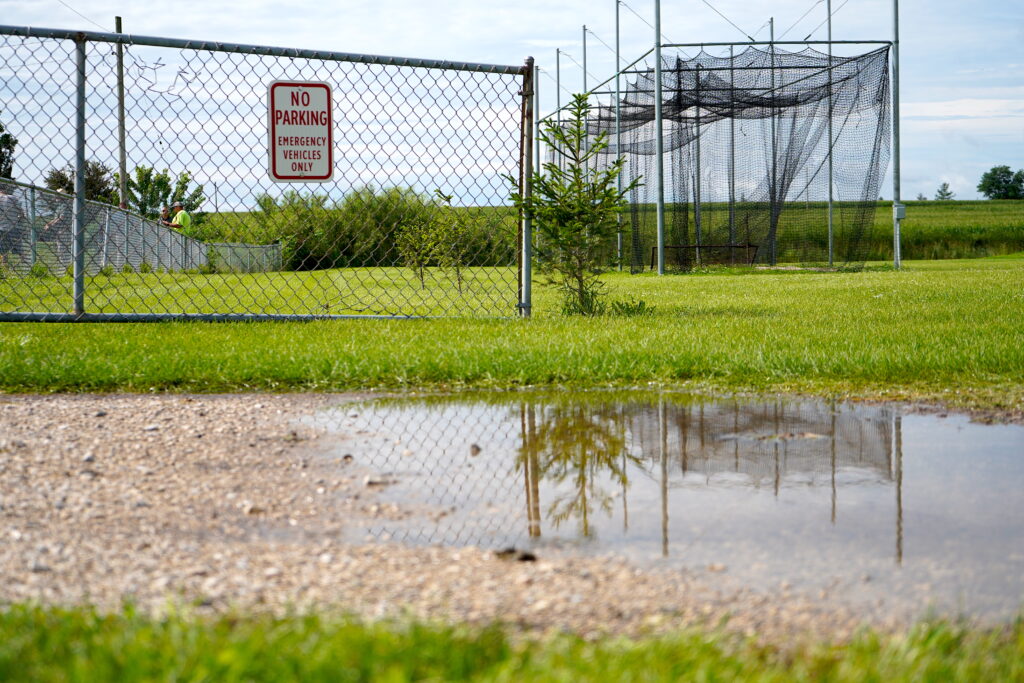
The entrance to Union Middle School’s football/softball complex pools with standing water back on July 24 in Dysart. PHOTO BY RUBY F. MCALLISTER
The space Schemmel is hoping to convert to an education wetland is located on the southwest side of Dysart and begins at the corner of X Avenue and Sherman Street where the school district’s FFA crop plot is located. The football field is located directly north of the plot (west of the middle school) with the softball field in-between. A natural waterway — chock full of towering vegetation — flows along the north edge of the plot from west to east, draining into the city’s storm sewer where it meets the parking lot. The area is low compared to the surrounding fields and residential neighborhood, essentially operating as a drainage basin.
“About every three or four years we have to clean it out,” public works superintendent Schneider said in reference to the east end of the waterway. “If we do nothing, this will get worse.”
“The storm drain by the (light) pole, we just cleaned it out,” Hatch said, motioning behind him. “It’s amazing how much it builds up.”
“It’s an ongoing issue,” Schneider added.
Schemmel said the idea for a wetland was first broached back in 2023 as part of Dysart’s Community Visioning Program Committee work which, in part, focused on connecting the community through a trail system. Pastor Hartwig was a committee member.
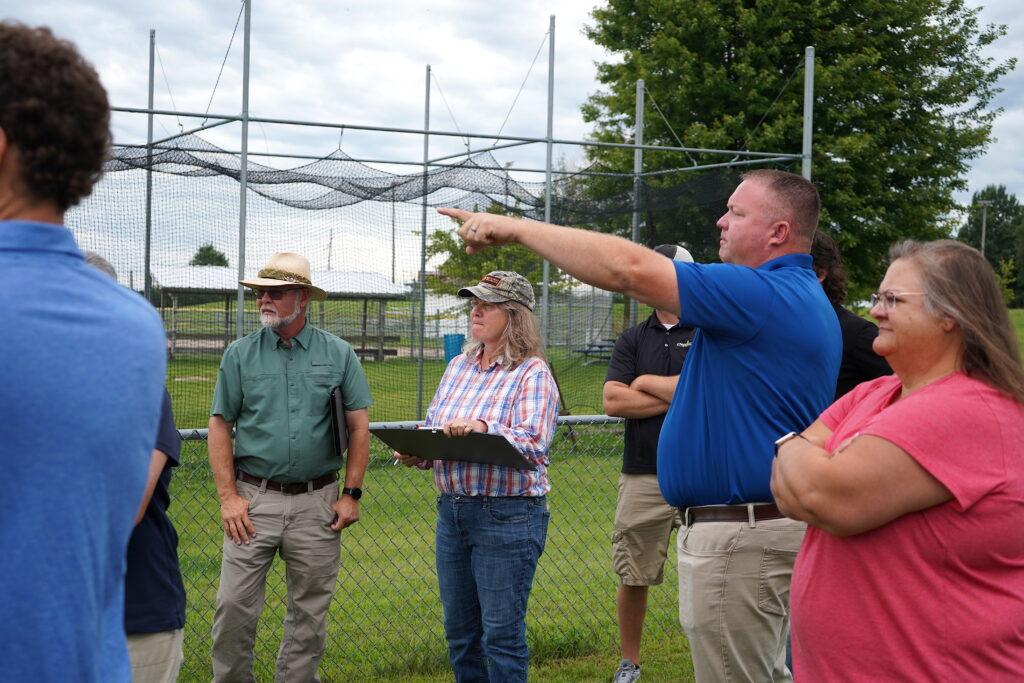
PHOTO BY RUBY F. MCALLISTER
“Ben and I connected on this a couple years ago,” Hartwig said. “We were looking to put a trail around town. … We were looking more to go through town, and that kind of got a lot of negative feedback … We’d really like to see [a trail] happen … but make it more of a loop around town and connect some of our features.”
“There are definitely features that you can incorporate in the wetland design that would allow trail access, as well as, importantly, maintenance access. I think there are ways to kind of achieve some of that,” Bouska said in response to Hartwig.
“From a city standpoint, our concern is always water. Water, water, water,” Mayor Pro Tem Wankowicz said, eliciting a few chuckles. “I like the educational aspect of it that Ben has talked about doing down the road. Making it not just a pond out here but [a place] that students can come learn … To me, it just fits in perfectly here.”
“Is it too much water? Is it water quality?” Bouska asked.
“Too much water, right now,” Wankowicz replied. “Then it gets sitting and that breeds mosquitos and everything else that goes on here … We have a couple spots around (town) that seem to hold water. I mean, for a couple years we didn’t have anything, but right now, it’s kind of drowning us.”
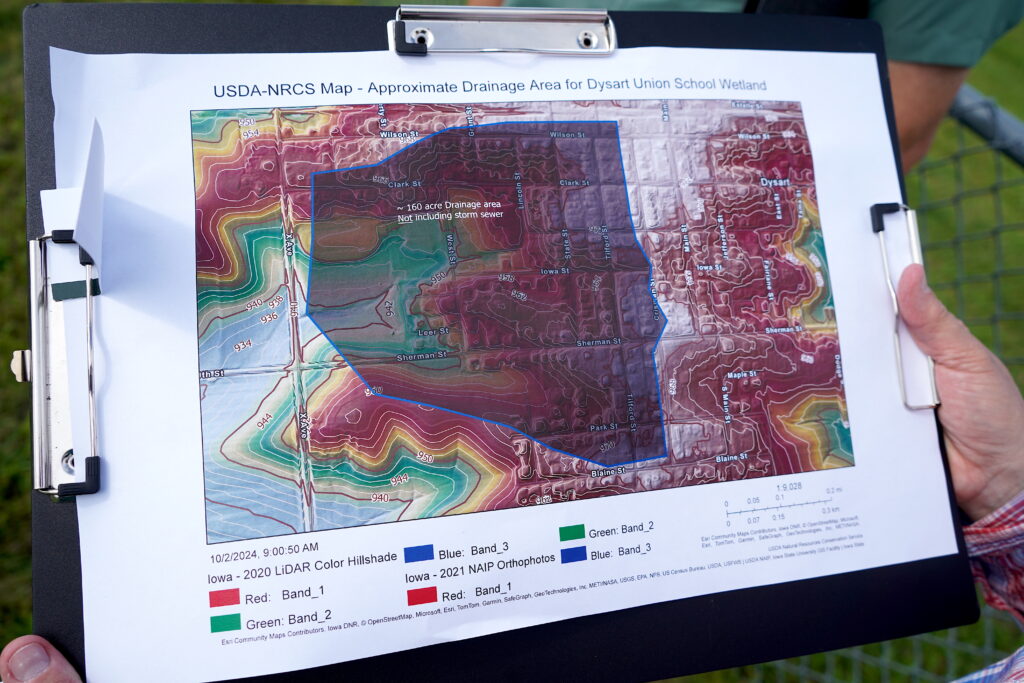
PHOTO BY RUBY F. MCALLISTER
Bouska then explained that a wetland project like the one being proposed “has the potential to address every single rainfall event between an inch and a quarter and a 100-year storm” which would allow different events to “flow through.” Based on her and her colleagues’ preliminary work, the Dysart-Union wetland could help drain a 160-acre area, not including the storm sewer.
“A wetland is a very flexible practice,” Bouska said.
For his part, Superintendent Howard said he had “no concerns on the school side,” telling the group he was excited by how the project might benefit both the middle and high school FFA programs.
“I believe that both those teachers are anxious to have this opportunity for their kids,” he said. “It’s just another great opportunity to provide for students for the long term.”
One concern expressed by the group was how losing the crop plot’s revenue stream would affect the FFA program in the future.
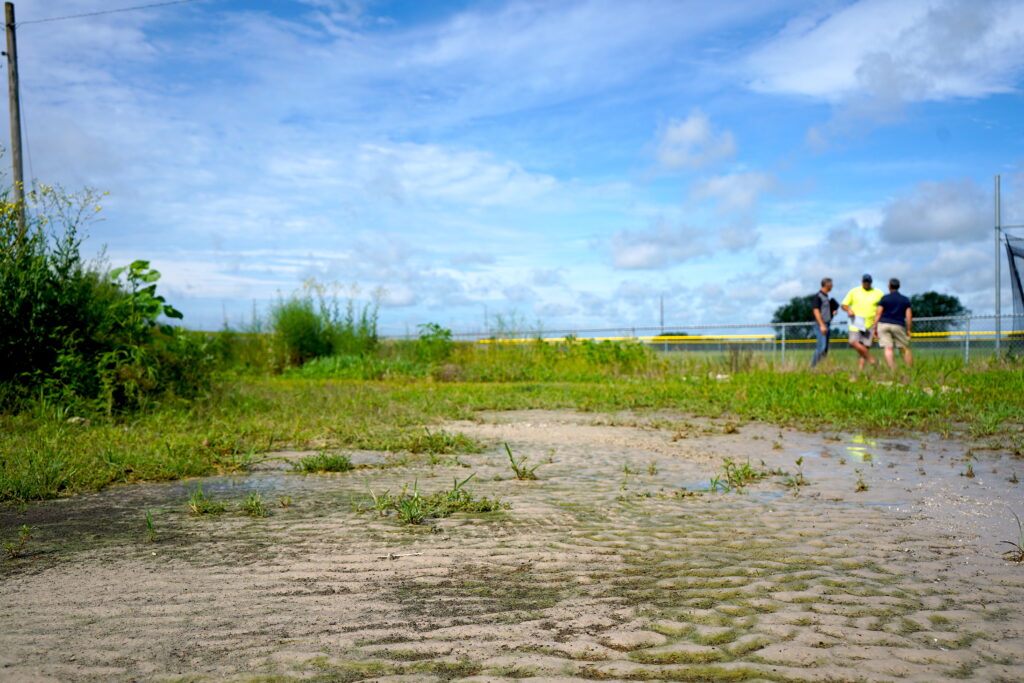
PHOTO BY RUBY F. MCALLISTER
“If we wanted to dream a little bit, from my perspective, it seems like it’s hard to get (new) students [enrolled] without having housing. And it’s hard to get employees here without having housing. … There’s not even a spot to walk with green space,” Schemmel said in response. “The focus is now, let’s take care of our water quality, make sure the older houses don’t get backed up into their basements … [and] potentially utilize that space … to maybe put a few apartment buildings up there, knowing that there’s a lot of farm ground between here and the high school.”
Schemmel went on to say his long-term vision included renting or acquiring ground closer to La Porte City which would allow high school students to be “more out in the field.”
“Right now, there’s a 20-minute, 25-minute drive for these high school students to check their field,” Schemmel said before later adding, “It’s going to get consumed, some, eventually. … We can have that conversation (down the road): ‘Hey, this field is going to be smaller or eventually might go away.’ But to maintain it for the next few years.”
He then added, “I also know, water flows where water goes.”
Funding the flow
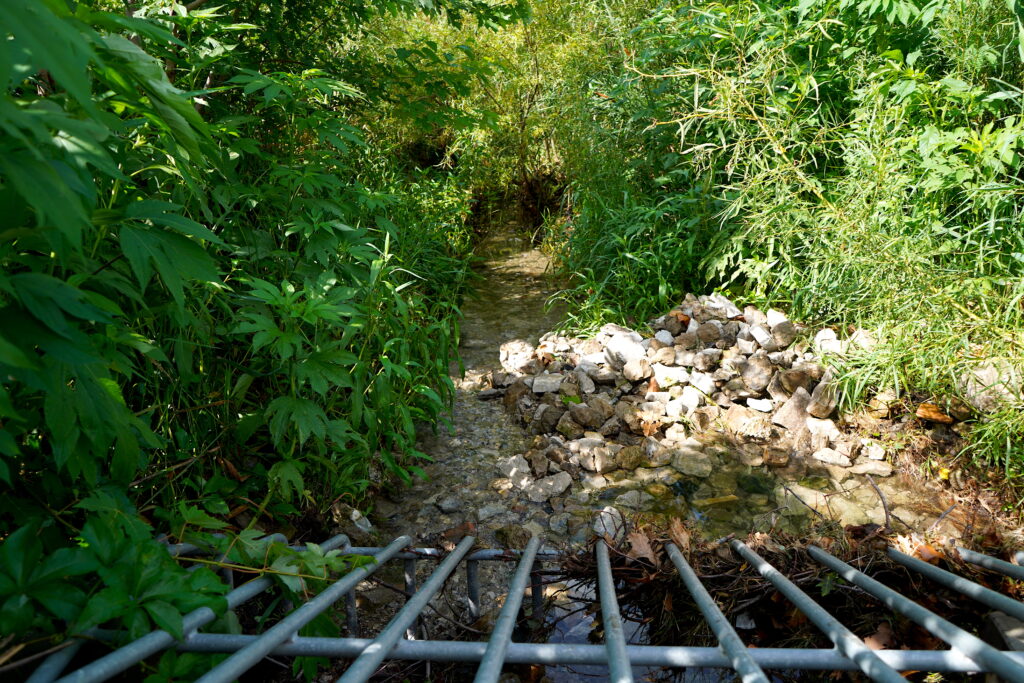
PHOTO BY RUBY F. MCALLISTER
The conversation later turned to the question of funding with Bouska explaining cost-share grants to support urban conservation projects were available from IDALS.
“The request for proposals will actually come out sometime in September. It’s a pretty easy application, it’s a couple pages of text plus some maps and you need a rough estimate (of costs). And that’s the pre-proposal. We try to keep it simple because this is all about getting whatever the practice is constructed. That’s due before Thanksgiving. … And then you would find out sometime (in) December or January. And then there’s a [second round].”
The 50% required match can come from a variety of sources, she explained, including private partners or in-kind donations. Funding awards have been anywhere from $20,000 to more than half a million in recent years, depending on the size of the treatment area.
“From the NRCS perspective, our motto is ‘helping people help the land’ and I think this is it. This, right here,” district conservationist Stacie Buhr said. “Soil, erosion – containing that – water quality, water runoff, this encompasses everything. And by making sure we have all the partners here that are players within this game, I think we’ve got an outstanding group.”
As the hourlong discussion wound down, the trill of red-winged blackbirds began to heavily punctuate the quiet from the nearby waterway. While most of the attendees headed back to work at that point, a small cohort stayed behind to look at maps, take further notes, and formulate next steps — ready to go with the flow.
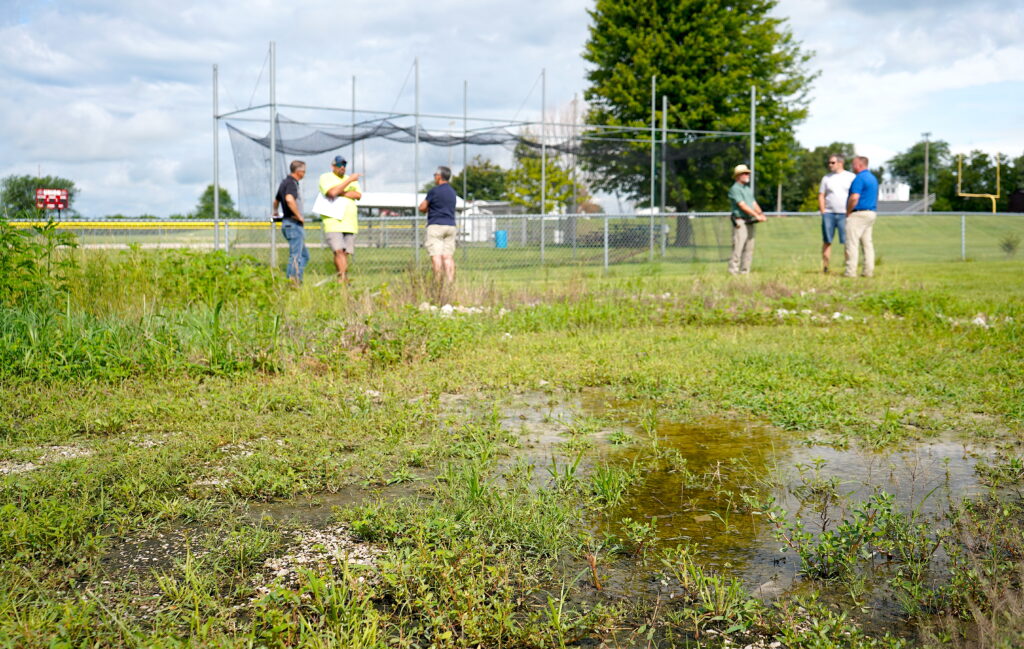
PHOTO BY RUBY F. MCALLISTER

